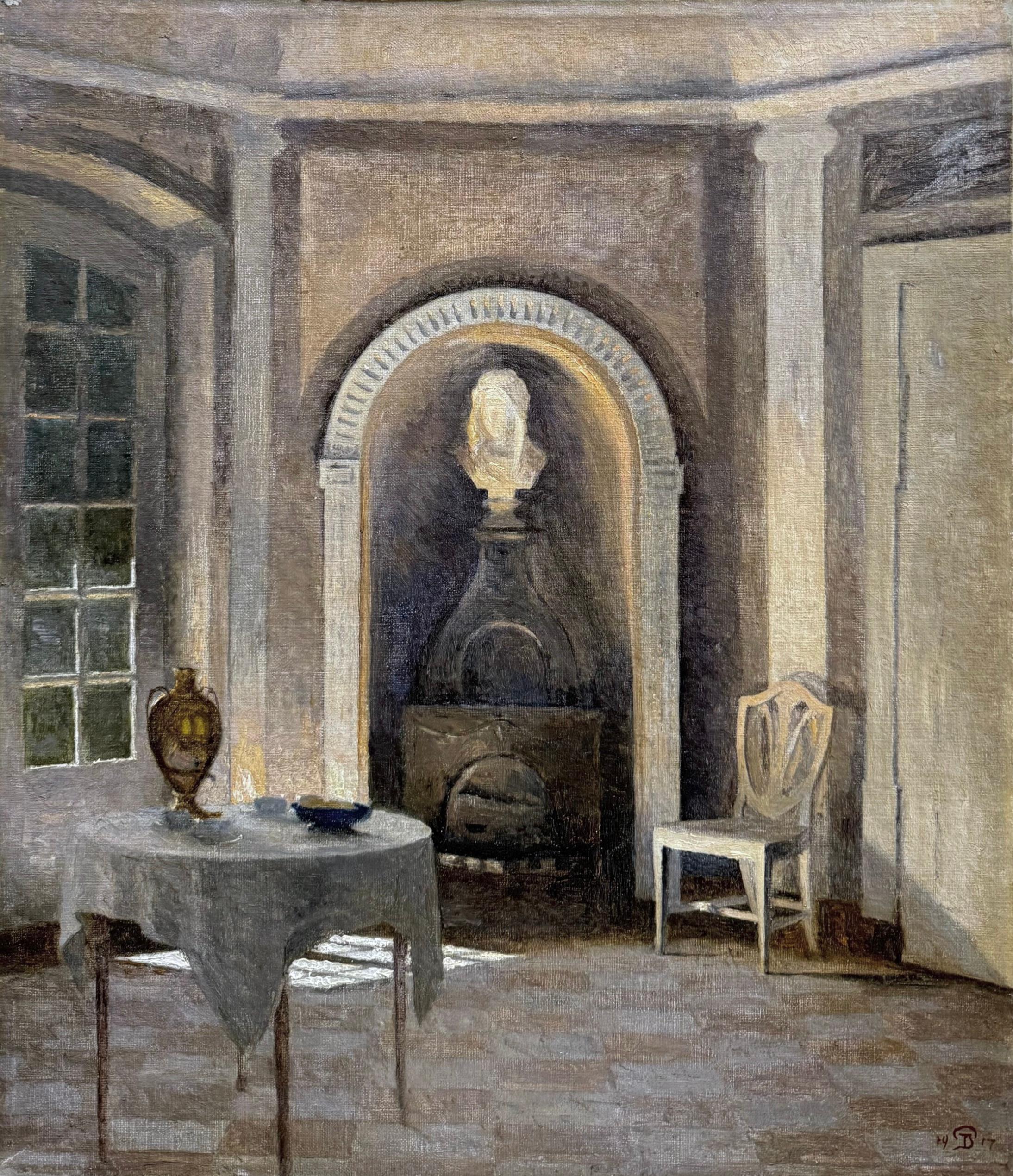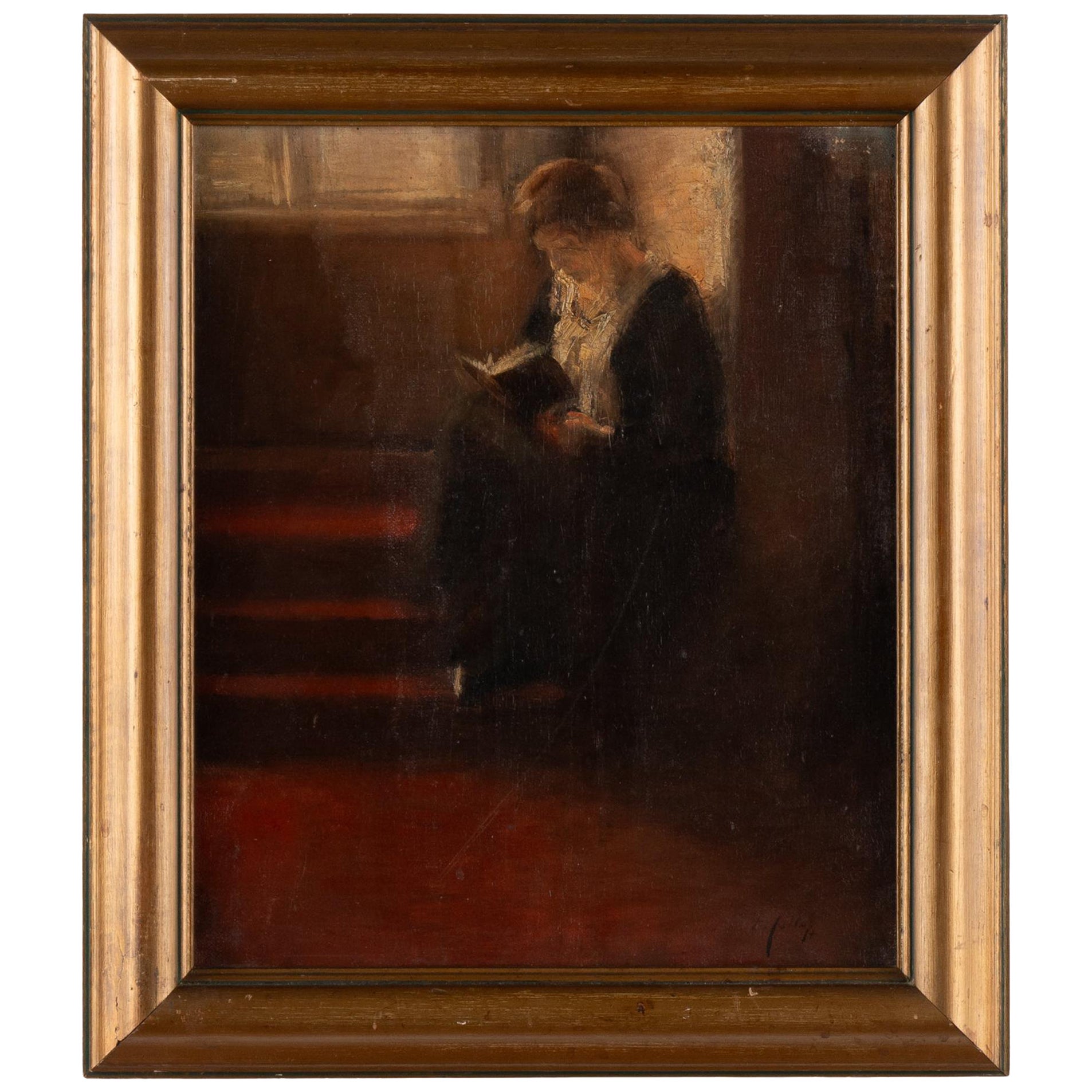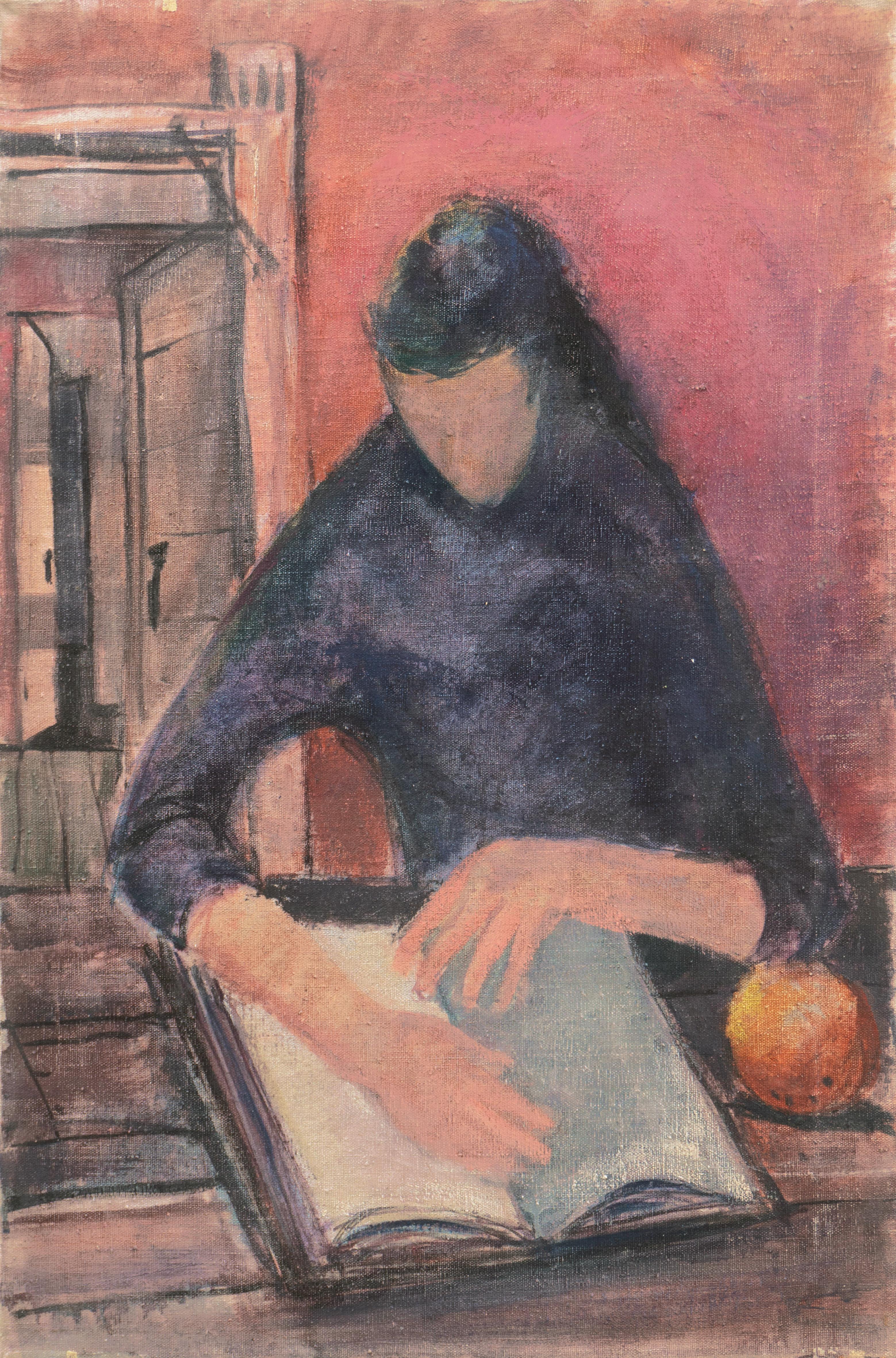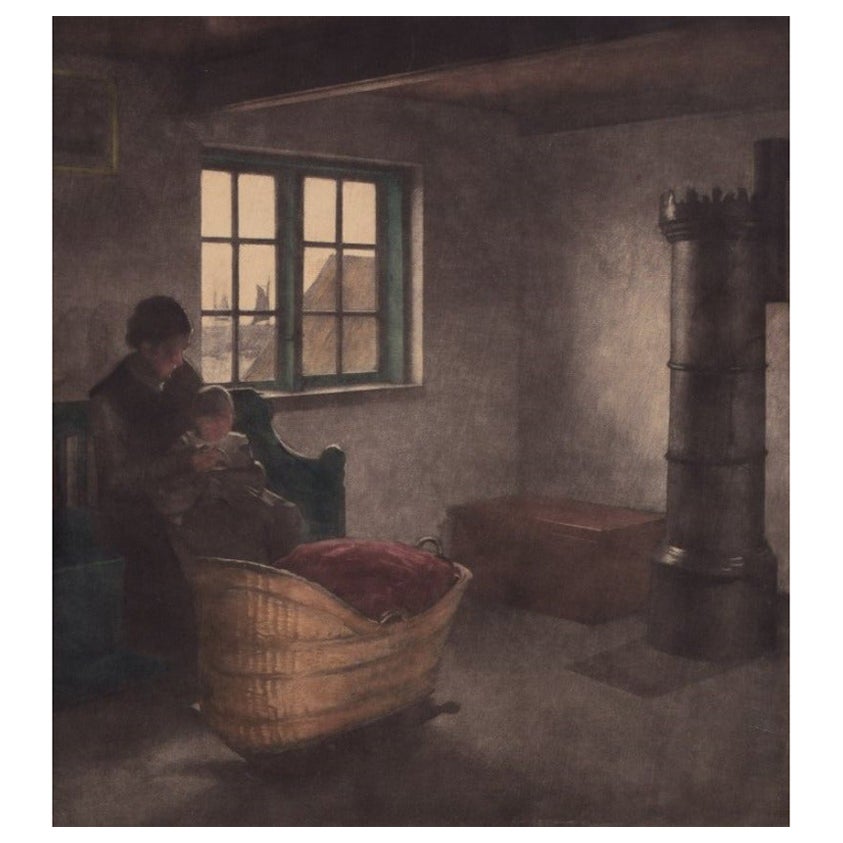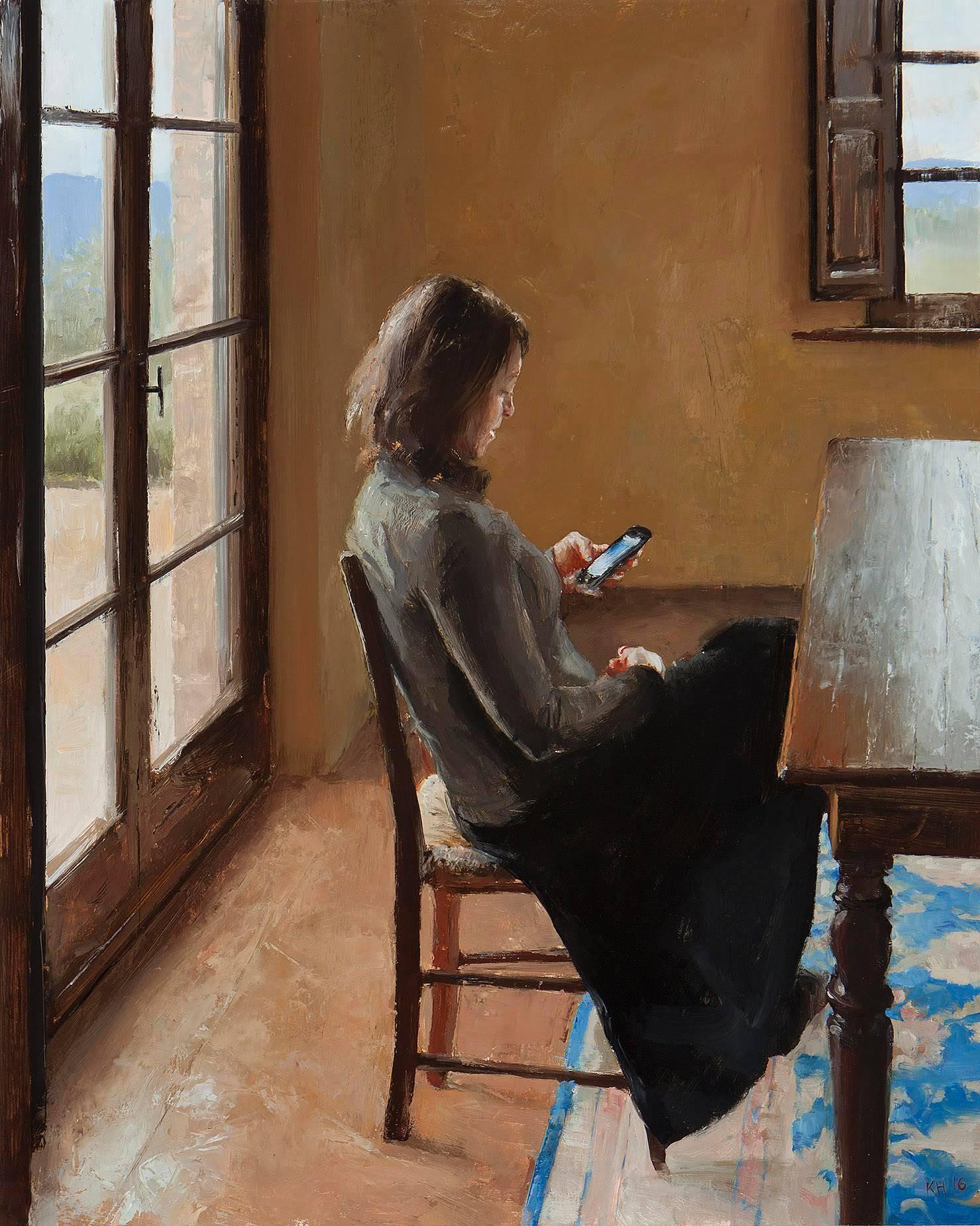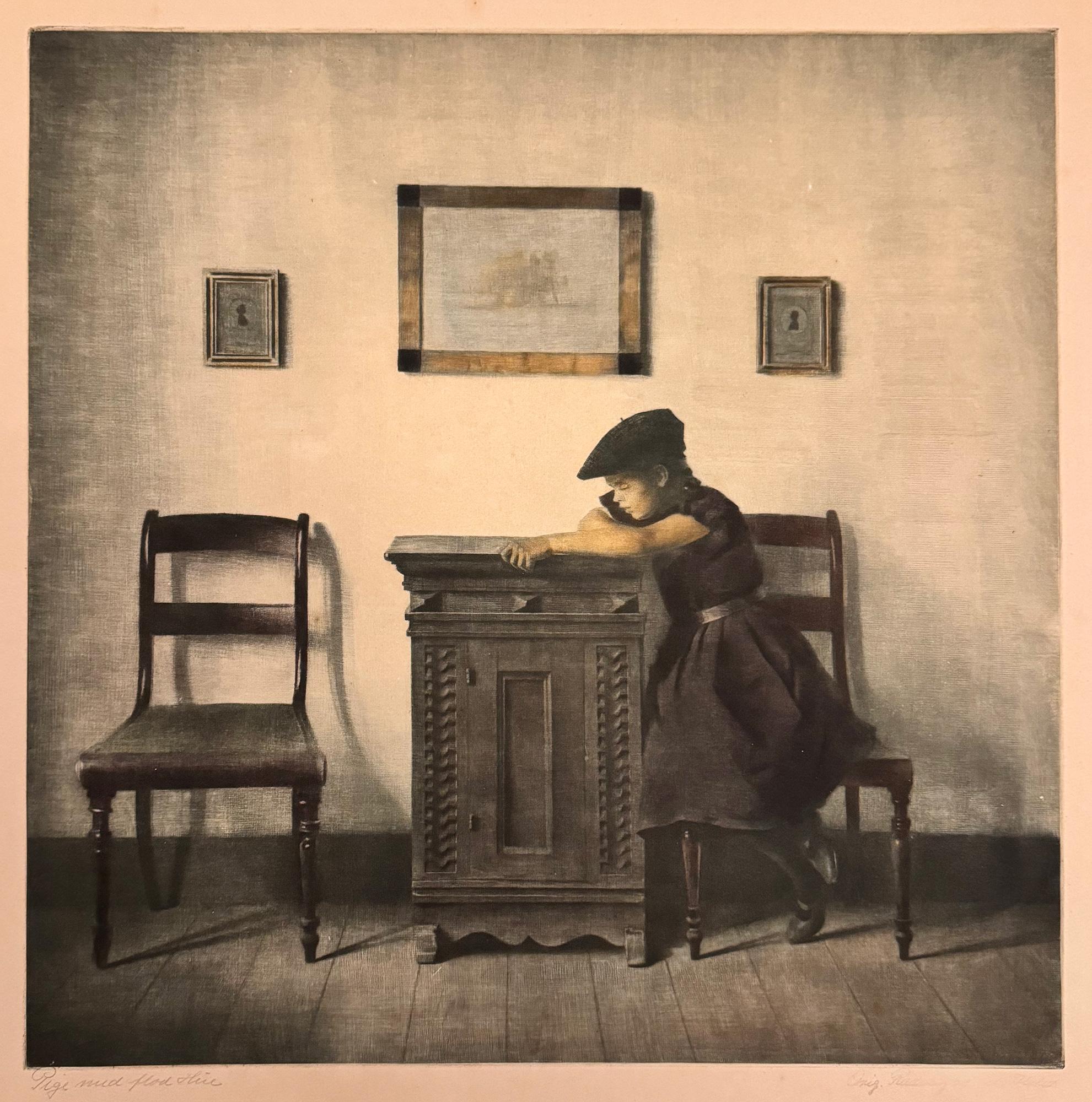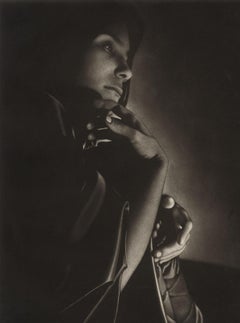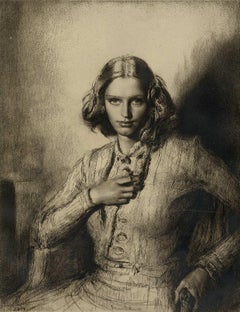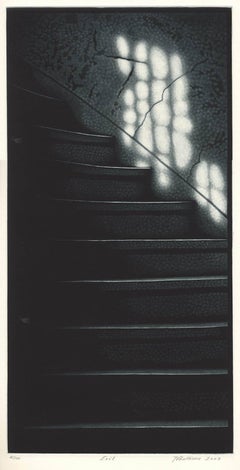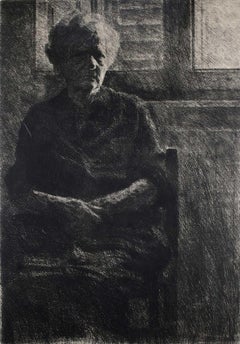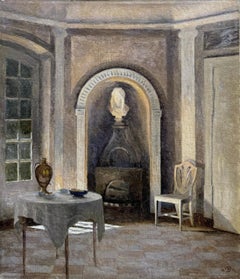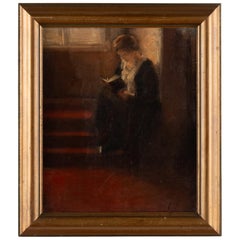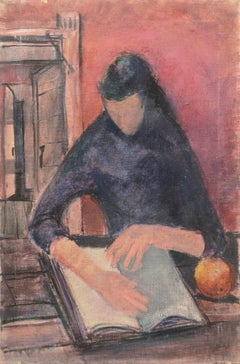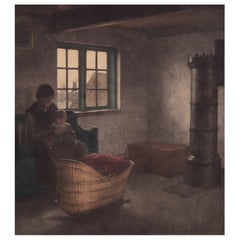Items Similar to Interior with Red Shawl (Young woman reads in this calm Vermeer-like interior)
Want more images or videos?
Request additional images or videos from the seller
1 of 9
Peter IlstedInterior with Red Shawl (Young woman reads in this calm Vermeer-like interior)1913
1913
$7,500
£5,682.67
€6,520.42
CA$10,553.71
A$11,601.43
CHF 6,097.18
MX$140,883.63
NOK 76,060.79
SEK 72,062.25
DKK 48,663.52
About the Item
Interior with a red shawl conveys a quite different mood and feeling: one of calm, and suspension of time. Here the suggestion is that the woman is waiting for something to happen, though we are given no inkling of what that might be. She could be waiting for someone on the other side of the door, or for someone to emerge from a different place entirely. Or she could simply enjoy that particular spot by the window for reading. It is amazing to me how much of a shift is depicted in the artist's renderings of women in the same interiors
Ilsted was to become widely known for his interior scenes. Using the interior of his home and members of his family as sitters, Ilsted’s subjects would be scenes set in the kitchen preparing food, or in a dining room or drawing room with or without figures, but always with an emphasis on light and its interplay on surfaces.
Ilsted begun working with the mezzotint printmaking process in 1906, when this technique was relatively uncommon in Denmark. He spent time studying and collecting English mezzotints,and “often printed his mezzotints in colour à la poupée, a technique that involves inking different areas on the plate by hand with a bundle of fabric, which allows for the use of several colours. This is a painstaking process, as the colours must be kept from mixing, and it has to be repeated for each run under the press. These truly singular coloured prints were highly sought after in his day.”
What I enjoy in these prints is the feeling they generate of having just walked into the scene at a moment of transition. They depict a pause in time, just before things change, and this creates a certain quality of anticipation and excitement. Despite their stillness, these images have a dynamic quality to them, and through them I feel drawn into the everyday workings of the Ilsted household.
These interiors evoke at once a sense of calm, as well as a sense of mystery.
- Creator:Peter Ilsted (1861 - 1933, Danish)
- Creation Year:1913
- Dimensions:Height: 19.25 in (48.9 cm)Width: 16 in (40.64 cm)
- Medium:
- Movement & Style:
- Period:
- Condition:
- Gallery Location:New Orleans, LA
- Reference Number:1stDibs: LU841311492992
About the Seller
4.9
Recognized Seller
These prestigious sellers are industry leaders and represent the highest echelon for item quality and design.
Platinum Seller
Premium sellers with a 4.7+ rating and 24-hour response times
Established in 1988
1stDibs seller since 2018
802 sales on 1stDibs
Typical response time: 3 hours
Associations
International Fine Print Dealers Association
- ShippingRetrieving quote...Shipping from: New Orleans, LA
- Return Policy
Authenticity Guarantee
In the unlikely event there’s an issue with an item’s authenticity, contact us within 1 year for a full refund. DetailsMoney-Back Guarantee
If your item is not as described, is damaged in transit, or does not arrive, contact us within 7 days for a full refund. Details24-Hour Cancellation
You have a 24-hour grace period in which to reconsider your purchase, with no questions asked.Vetted Professional Sellers
Our world-class sellers must adhere to strict standards for service and quality, maintaining the integrity of our listings.Price-Match Guarantee
If you find that a seller listed the same item for a lower price elsewhere, we’ll match it.Trusted Global Delivery
Our best-in-class carrier network provides specialized shipping options worldwide, including custom delivery.More From This Seller
View AllUntitled (Portrait of a young woman - wife of the artist)
By Francisco Souto
Located in New Orleans, LA
This is a self portrait of a young woman who is the wife of the artist.
Francisco Souto was born in Venezuela, and received a BFA from Herron School of Art and a MFA from The Ohio ...
Category
Early 20th Century American Modern Portrait Prints
Materials
Mezzotint
$375 Sale Price
25% Off
OPHELIA (the artist's mistress / second wife) - In Celebration of Pride Month
By Gerald Leslie Brockhurst
Located in New Orleans, LA
Stone and Press Gallery is excited to offer several works in celebration of the LGBTQ community.
This elegant etching titled the gilded youth is of the second wife of the artist ...
Category
1940s American Modern Portrait Prints
Materials
Etching
Exit (Dappled sunlight in an ancient stairway leads to an uncertain end.)
By Jukka Vanttinen
Located in New Orleans, LA
Finns always seek the solace of nature. Is this mysterious stairway an escape from the challenges of civilization? Vanttinen created this mezzotint in an edition of 100 and it is tit...
Category
Early 2000s Contemporary Interior Prints
Materials
Mezzotint
My Great Mum (the artist's mother, a quintessential Italian matriarch)
By Paolo Ciampini
Located in New Orleans, LA
"My Great Mum" is a loving portrait of the artist's Italian mother.
Paolo Ciampini was born in Montopoli in Val d'Arno in 1941. After graduating from the Art Institute of Cascina (...
Category
1990s Portrait Prints
Materials
Etching
Bedside View - In Celebration of Pride Month
By Brinley Ribando
Located in New Orleans, LA
Stone and Press Gallery is excited to offer several works in celebration of the LGBTQ community.
a sexy young girl lies in bed bathed in sunlight
Category
2010s American Modern Black and White Photography
Materials
Digital Pigment
$72 Sale Price
20% Off
Looking out the Window - In Celebration of Pride Month
Located in New Orleans, LA
Stone and Press Gallery is excited to offer several works in celebration of the LGBTQ community.
A signed Certificate of Authority will be included with all photographs. A young ...
Category
2010s Photorealist Nude Prints
Materials
Photographic Paper, Digital
$320 Sale Price
20% Off
You May Also Like
Interiør Fra Liselund (Interior from Liselund)
Located in New York, NY
Peter Ilsted's "Dining Room at Liselund Manor" from 1917 is not only a remarkable illustration of the Copenhagen Interior School's aesthetic but also a profound exploration of the co...
Category
1910s Post-Impressionist Interior Paintings
Materials
Canvas, Oil
Price Upon Request
Original Oil on Canvas Interior of Woman Reading, Signed by Edvard Anders Saltof
Located in Round Top, TX
Original oil on canvas interior painting of a woman reading in the sunlight. Signed with monogram.
Artist: Edvard Anders Saltoft (b. Copenhagen 1883, d. s.p. 1939)
Condition: In need...
Category
Early 20th Century Danish Paintings
Materials
Canvas, Wood, Paint
'Study of a Woman Reading', American Mid-Century Figurative Interior Scene Oil
Located in Santa Cruz, CA
Inscribed verso, 'P. Johnstone' (American, 20th century) and painted circa 1965.
A substantial Modernist figural oil of a young woman shown reading a book in a rose-colored room, wi...
Category
1960s Figurative Paintings
Materials
Canvas, Oil
Peter Ilsted. Interior scene with mother and child. Color mezzotint on paper.
Located in København, Copenhagen
Peter Ilsted (1863-1933).
”Fiskerstue Hornbæk”. Interior scene with a mother and child.
Original print by Peter Ilsted. 1932. Opus 72.
Color mezzotint on paper.
In very good conditi...
Category
Vintage 1930s Danish Prints
Materials
Paper
Woman Reading a Letter, Framed
By Kenny Harris
Located in Fairfield, CT
Represented by George Billis Gallery, NYC & LA --Kenny Harris's latest body of work was informed by two recent residencies in Tuscany, at Borgo Finocchiet...
Category
21st Century and Contemporary Realist Interior Paintings
Materials
Oil, Panel
Little Girl With Flat Cap
Located in Middletown, NY
Color mezzotint on fibrous, buff wove paper, 19 x19 inches (482 x 484 mm), full margins. Titled in pencil, lower left, and with the artist's stamp in black ink in the lower right mar...
Category
Early 20th Century Modern Portrait Prints
Materials
Etching, Aquatint
